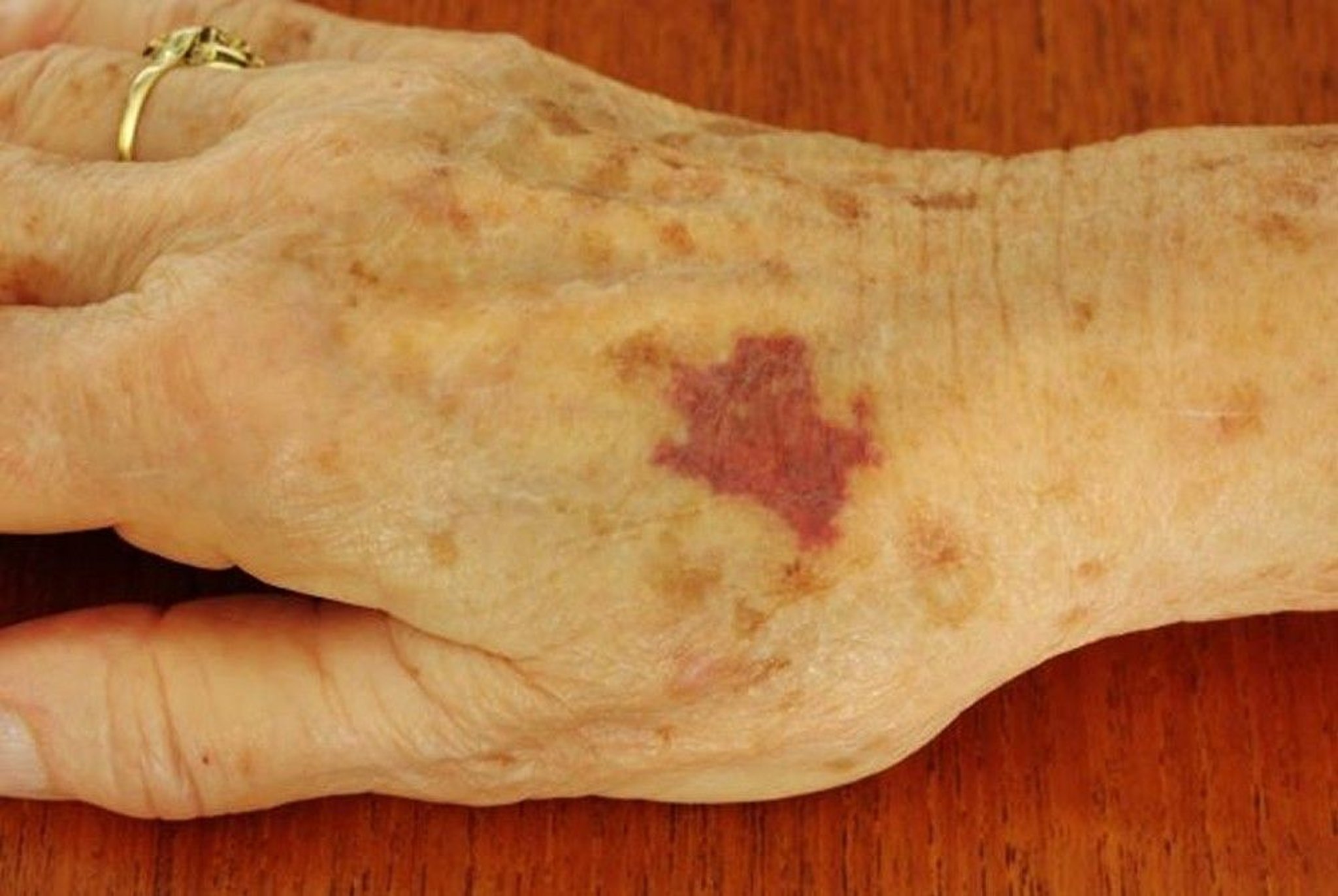Senile purpura causes ecchymoses and results from increased vessel fragility due to connective tissue damage or atrophy in the dermis caused by chronic sun exposure, aging, and medications.
Topic Resources
(See also Overview of Vascular Bleeding Disorders.)
Purpura refers to purplish cutaneous or mucosal lesions caused by hemorrhage. Small lesions (< 2 mm) are termed petechiae, and large lesions are termed ecchymoses or bruises.
SCIMAT/SCIENCE PHOTO LIBRARY
Senile purpura typically affects older patients as their dermal tissues atrophy and blood vessels become more fragile. Patients develop persistent dark purple ecchymoses, which are characteristically confined to the extensor surfaces of the hands and forearms. New lesions appear without recognized trauma and then resolve over several days, leaving a brownish discoloration caused by deposits of hemosiderin. This discoloration may clear over weeks to months or may be permanent. The skin and subcutaneous tissue of the involved area often appear thinned and atrophic.
Medications (eg, corticosteroids, warfarin, aspirin, clopidogrel) may exacerbate the ecchymoses. Medications (eg, corticosteroids, warfarin, aspirin, clopidogrel) may exacerbate the ecchymoses.
No treatment hastens lesion resolution or is needed. Although cosmetically displeasing, the disorder has no health consequences and does not herald severe bleeding elsewhere.


